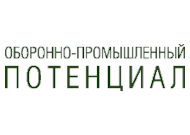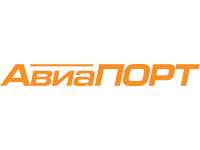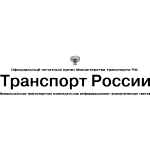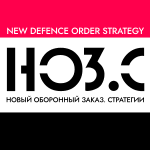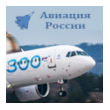Plenary Discussion “Financial instruments for the helicopter industry.” Main Topics and Outcomes
The Official Business Program “HeliRussia 2020” was opened by the plenary discussion “Financial instruments for the helicopter industry.” The discussion was divided into two parts: in the first part, political ammunition and strategic management of the industry were discussed; in the second part, there was a conference between representatives of leasing and insurance companies regarding financial instruments and restraints within the helicopter industry.
The main regulators of the helicopter industry were invited to participate in the plenary discussion – The Ministry of Industry and Trade of the Russian Federation and the Ministry of Transport of the Russian Federation, banks and development Institutions, and the largest leasing and insurance companies. The main purpose of the discussion was to consider the efficiency of the State support measures for the industry and rules of reciprocity in economic behavior that will help strengthen the industry.
Historically, Russia is an absolute leader in the sectors of medium and heavy helicopters. A few years ago, the Ansat helicopter appeared in the product line. The production of a new type of aircraft or special modification ensures the creation of a new market or the growth of the existing one. This is what happened with the advent of the light multi-purpose Ansat, which helped to “revive” air medical transport. A notable event in 2020, was the start of the operation of the new Mi-38 helicopter. The participation of the State as a “Main Investor” played a key role in the development of the industry
Government Incentive and Project Finance
Welcoming the speakers, Mr. Dmitry Lysogorsky (Director of the Aviation Industry Department, Ministry of Industry and Trade of the Russian Federation), emphasized that supporting the helicopter industry is one of the important priorities in the work of the Department.
Now the main State measure is subsidizing loans from leasing companies for the supply of helicopter equipment, totaling about 1-1.5 billion per year. The Ministry’s work is in line with the search for new and most effective measures that are associated with an increase in support volumes, the main goal of which is the development of helicopter production and the introduction of new equipment to the market.
In the sector of air medical transport a great potential remains, which according to the speaker, has not yet been realized. The regions demonstrate the demand for air medical helicopters, thus in 2021-2022 the supply of over 60 new helicopters is planned, which should positively affect the business economics of the helicopter industry.
To promote new equipment and increase the share of new types of helicopters, the Ministry of Industry and Trade of the Russian Federation plans to include new types – Mi-38 and Ka-62 in the list of subsidies.
The second support measure was implemented within the framework of Decree No. 301 related to the formation of a warehouse of spare parts. The Ministry of Industry and Trade of the Russian Federation plans to seriously expand these measures to include new areas related to training and retraining of personnel. According to the Director of the Aviation Industry Department, such an expansion is necessary to form an opportunity for the recipient to seriously develop the business and not depend on market and economic volatility.
According to the results of the trip of the Prime Minister to the Far East, the Ministry of Industry and Trade of the Russian Federation, together with the Ministry of Transport of the Russian Federation, was instructed to change the format of subsidies for updating the fleet of aircraft for domestic, regional and local air transportation (Decree No. 1212). The subsidy under the Decree will be expanded to helicopter equipment. Also in the future, the issue of transferring the administration of this subsidy to the Ministry of Industry and Trade of the Russian Federation is being considered in order to form a full package of support measures for both the manufacturer and the operator in one ministry.
Before closing with the conclusions, Mr. Lysogorsky noted that the Ministry will continue to support the trend of increasing the share of new types of helicopters in order to stimulate the supply of modern equipment.
The topic of State participation in the industry development was continued by Mr. Kuznetsov, First Deputy Director of the Industrial Development Fund.
The Industrial Development Fund was formed in 2014, thanks to the initiative of the Ministry of Industry and Trade of the Russian Federation, the total project budget is more than 400 billion rubles.
Now in the Fund’s portfolio of more than 600 projects, there are more than a dozen financing programs, including programs for development projects, the production of components and a program for defense enterprises conversion.
Mr. Kuznetsov emphasized focus of the Fund on projects for the introduction of new technologies and local manufacturing content. The Fund also provides multiplier programs for financing “classic” projects in combination with leasing programs, which significantly reduces the weighted average rate for the borrower. Especially, multiplier programs are beneficial for resource-intensive enterprises.
One of the most popular programs, including helicopter enterprises, is the digitalization program. The Fund finances projects for the implementation of digital and technological processes, which are aimed at optimizing business processes.
Mr. Kuznetsov noted that the participants of the exhibition are recipients of the Fund, including “NPO Science”, PJSC, “EOKB Signal” named after A.I. Glukharev”, JSC, “ACC Progress”, PJSC, “REDUCTOR-PM”, JSC. In total, the Fund invested about 7 Billion rubles in aerospace projects.
Answering the questions of discussion participants about the possibility of direct financing or the acquisition of aircraft by operators, Mr. Kuznetsov noted that there is no corresponding programme for companies that provide helicopter services. According to Mr. Lysogorsky, the issue of financing direct supplies of equipment at the expense of the Fund can be considered together with the Ministry of Industry and Trade of the Russian Federation.
Prospects for the Development of Domestic Air Transport
in the Context of the Crisis
Summing up the work of 2019, at the forum of the Helicopter Industry Association, operators noted a significant change in the helicopter services market. The main factors of the market decline were a reduction in oil prices and a reduction in international orders of aircraft. In 2020, these factors were intensified by the current crisis, which the helicopter industry felt unevenly.
In this regard, it is very important to understand what support measures air carriers will receive and what new trends of helicopter transport usage will be carried out within the framework of State programmes.
Mr. Anton Nikiforov, Head of the Department of Industrial Development of Air Transport of the Department of State Policy in the Field of Civil Aviation of the Ministry of Transport of the Russian Federation, spoke about such measures.
In his speech, Mr. Nikiforov touched upon the development of a network of local regional transportation, which, according to the law, belong to the budgets of entities (regions).
In general, regional transportation is unevenly distributed, they are preserved in hard-to-reach regions with harsh climatic conditions and an underdeveloped network of regular regional land communications. According to the results of previous periods, the turnover of local regional transportation amounted to 2 million passengers, while 95% of transportation falls on 14 entities.
Mr. Nikiforov noted that in the current conditions, the financial condition of the entities does not allow the development of the local transportation network, therefore, a procedure for providing subsidies to the regions has been developed. The implementation of this measure will create a stable passenger flow.
In terms of infrastructure development, the changes introduced by the Ministry of Transport of the Russian Federation to the requirements for landing sites and heliports, including those not subject to categorization, were announced. The draft decree takes into account all levels of security; and measures to protect transport infrastructure objects have a different approach depending on their functional purpose.
It is planned to work out the possibility of exempting owners of landing sites from paying land tax by the Ministry of Finance of Russia and lifting the ban on the transfer of agricultural land to industrial use, including concessions for obtaining permission to build helicopter sites for the Ministry of Natural Resources of Russia.
The speaker clarified particularly how the “regulatory sandboxes” will be able to accelerate the development of the unmanned aircraft market. As part of the law “On experimental legal regimes in the field of innovation in the Russian Federation” published in 2020, individual regions will be allowed to experiment with the launch of full-fledged unmanned vehicles in a limited area.
This law will make it possible to use drones in work that are today limited either by the lack of procedures or by the redundancy of requirements. The mechanism of regulatory sandboxes will allow adjusting legislative requirements so that, having gained the necessary practice of using new technologies, it will be possible to determine the amount of balanced regulation in the future.
In terms of the development project of the Far East and the Arctic, where the use of helicopters is important for the transport system, the forecast required fleet has been determined. Demand was determined by airlines taking into account their current solvency and taking into account State support measures. Until 2024, the estimated requirement is a fleet of about 250 helicopters throughout the country, including 40 for the Far East region.
Mr. Nikiforov also noted that these figures are not final, as the helicopter industry is developing, the forecast density of helicopter passenger traffic in the Far East and the Arctic will grow. Therefore, the volume of the forecast fleet of helicopters will increase. At the same time, unmanned aviation should potentially carve out a niche in cargo transportation.
International markets
Along with the development of domestic regional aviation, international activity for the helicopter industry is an important sector that has great potential both in terms of the sale of equipment and in terms of the aircraft operations of operators.
Export development for international expansion is also a national priority. Financial institutions united by a State corporation contribute to this task, VEB.RF.
Representative of the State Development Corporation Mr. Alexei Chistyakov, Managing Director of VEB.RF, noted that the helicopter market is competitive and voluminous, and export promotion is a challenge that requires investment, which is impossible without State support. State support measures are aimed at bringing the cost of financing to a competitive level.
Alexey made crucial caveat on three key topics that relate to systemic measures to support the industry:
- creation of a national leasing platform;
- helicopter residual cost;
- creation of an after-sales service system.
In terms of creating a leasing platform, according to the speaker, the key is the single formation of a portfolio of orders for leasing helicopter equipment, placing a consolidated order from manufacturers and attracting financing (including foreign) on the most preferential terms.
A unified leasing system will allow you to manage the formed fleet of helicopter equipment, which is necessary for a further step – the creation of a market for the sale of helicopters, which should be liquid, which will make it possible to determine the residual value of helicopter equipment, adequately and specifically assess the risks, justified Mr. Chistyakov.
In addition, one of the most important conditions for the international promotion of the helicopter services market is also the creation of conditions for the development of operational leasing, the speaker emphasized.
Strategic Innovation Management Tools
The next important element in improving the efficiency of the industry is related to innovation and new technologies. The helicopter industry is a high-tech industry that requires colossal investment. The main task of strategic management of high-tech corporations, is to determine the technological concept and trends in technological development.
How patent analysis can help in developing a development strategy, in determining where to invest and what is a “technology transfer” said Mr. Oleg Ena, Head of the project office of the Federal Institute of Industrial Property.
Patent analysis enables companies to effectively use information to identify technologies that can be effectively implemented in their own technological processes.
Technology and innovation management can include the identification of technological areas with an accelerated transition from basic research to industrial applications, which leads to the optimization of R & D both in money and in time.
Expert’s view of problems of the industry
Insurance is an important financial part of aviation business. Owing to specifics of activity, the insurance companies are able to estimate as separate aircraft, the separate companies, and the industry in general, their prospects and points of risk. What can be made for the increase in overall performance of airlines in the Russian conditions and what painful points of insurance exist in the helicopter industry were discussed by Mr. Kabachnik, the deputy CEO for aviation insurance of “Alfa Strakhovaniye”, JSC, the President of the International Union of Aerospace Insurers.
Mr. Kabachnik addressed the question of adequate assessment of the need for the new helicopter park. Airlines estimate requirement, on the one hand, proceeding from the current financial State and a condition of aircrafts, on the other hand – from value judgment of requirement of the market. And in this sense, it is possible to come easily to a situation when the same amount of works joins in the forecast of several companies. Thus, there is a revaluation of market sizes and, respectively, demand for the new equipment.
For an exception of such situation and, as a result, insolvency of carriers’ assessment of the market has to be discounted taking into account the final volume of passenger traffic.
The second problem which directly affects efficiency of insurance in the helicopter industry is connected with updating of the park and quality of new aircraft & equipment. The updating of the park which started in 2010, caused unconditional optimism. However, expectations from the new equipment – “the accident rate falls, the quality improves”, did not occur in reality.
A large number of accidents are connected with production defects and repairs. “We don’t see any trend of increase in safety, and on the new equipment insurance the companies face the unpredictable cost of repair”, – Mr. Kabachnik noted.
The speaker also drew attention to the “reverse side” of subsidies, since the supply of new equipment puts pressure on the residual value of resource machines, which leads to pressure on the margins of the operators’ business.
Another trend in time is the declining number of operators, and this, according to the speaker, is negative for the industry. It is no secret that in most parts there is a flag provision service, enlargement does not lead to improvement. The speaker also emphasized that most of the business goes towards unmanned systems.
The issue of State policy in the current conditions should be quality improvement, Mr. Kabachnik emphasized.
Participants in the second part of the plenary discussion Leasing and Insurance tools for the helicopter industry were:
Mr. Maxim Kalinkin – First Deputy of the General Director, “Gazprombank Leasing”, JSC;
Mr. Anton Korolev – Deputy General Director for Aviation of “State Transport Leasing Company”, PJSC;
Mr. Sergey Ogiyenko – CEO of “PSB Leasing”, JSC;
Mr. Roman Pakhomov – CEO of “Aviakapital-Service”, LLC;
Mr. Pavel Piskun – Department Director for work with large corporate business customer of “Sberbank Leasing”, JSC;
Mr. Vadim Semenkov – Head of Department of Insurance of Space & Aviation Risks of “Ingosstrakh”, PJSC.
Participants presented to the audience the companies and brought up a number of questions which are relevant for the leading financial structures of the industry.
Financial condition of operators in the conditions of the current crisis
The leasing companies felt the influence of the current crisis in a different way. According to the representative of the largest holder of helicopters of “GTLK” PJSC, Mr. Anton Korolev, – “there are no clients who wouldn’t ask for support”. At the same time it was noted that there is no definite answer, yet concerning measures which will help operators to re-structure payments, taking into account influence of the current crisis. For example, change of parameters of the transaction, including leasing prolongation, leads to change of financial mathematics at the cost of money and the creation of reserves. For the solution of this question consultations about the Ministry of Transport of the Russian Federation and the Ministry of Industry and Trade of the Russian Federation regarding effect of Resolution No. 1675 are necessary.
Cancellation of the VAT for operators on helicopter transportation is an important step of support of financial stability of the industry. It is especially relevant regarding the works paid with budgets of different levels – air medical transport, search and rescue, and local and regional transport of passengers.
It was also noted that operators need to try to obtain efficiency of the market and not to allow artificial depreciation of flight hour for obtaining contracts.
Operational leasing of helicopters
One of the promising areas of financial instruments is the operational leasing of helicopters. Operating leasing, according to representatives of the financial industry, will move away from classic banking technology and will allow better tracking of the technical condition of the asset.
This trade lane may become a point of market growth but there is no pre set solution yet, since the issue of additional expenses and competencies related to the maintenance and administration of assets arises.
Participants in the discussion emphasized that operational leasing is not yet possible, due to the lack of law. Nevertheless, the speakers noted the promise of this type of financial services and, accordingly, the need to finalize the legislative framework.
Aircraft certification
The expansion of Russian and foreign markets in terms of operational leasing is also associated with another concern, raised by Mr. Roman Pakhomov, General Director of “Aviakapital-Service” LLC, that is certification of domestic equipment abroad.
Now, according to the law, in practice, only domestic companies can be operators of domestic helicopters and this narrows the market. Standards for certification of flight equipment are not harmonized with European ones. Even with the Mi-8 helicopter capacity in China, India and other markets, the certification problem limits the presence of our equipment at international markets and increases the cost of equipment.
The speaker emphasized the readiness to equally finance the advancement of the issue on airworthiness standards and continue discussion of this topic at the level of the Federal Air Transport Agency.
The issues raised by the speakers are planned to be resolved within the framework of the activities of the Helicopter Industry Association.









